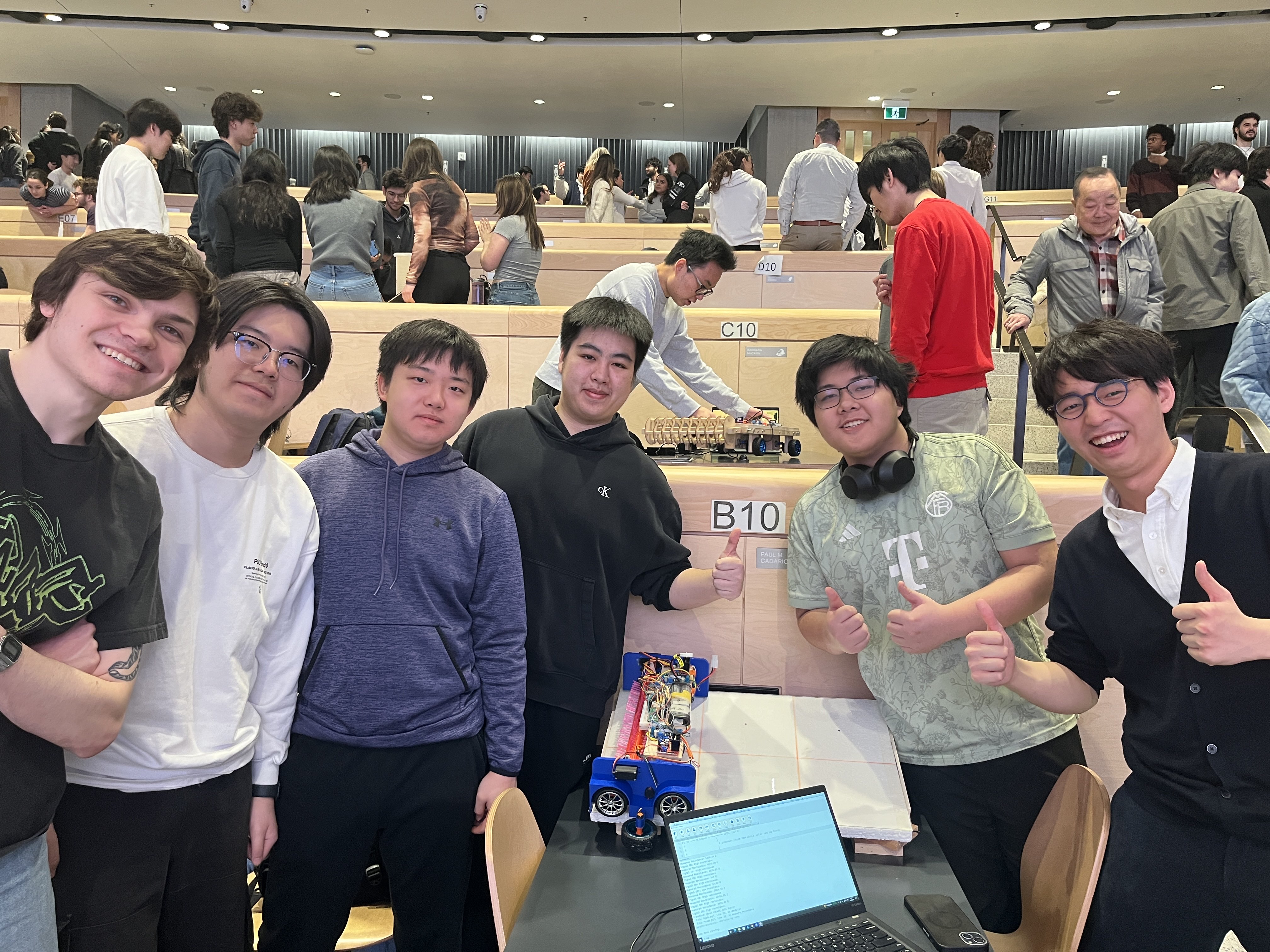What it does
Automated, water-free robot senses dust-induced light loss on rooftop solar panels, then traverses the surface with a retractable rotating brush, removing >90 % of particles in one pass to restore up to 6 % energy yield in dusty regions.
Your inspiration
During a summer field trip to rural Kenya I saw small rooftop solar panels caked with red dust, producing barely enough power for a school’s LED lamps. Villagers climbed brittle roofs with scarce drinking water to clean them, so panels stayed dirty and idle for weeks. Back at university, an ESC204 sustainability brief challenged us to remove environmental barriers to renewables. Remembering that dusty roof, I sketched a lightweight, rail-guided brush that runs off the panel itself and never needs water.
How it works
Four light-sensitive resistors under the panel act as a dirt meter: when their combined resistance rises above 120 Ω (≈ half the glass shaded) the Raspberry Pi Pico wakes the cleaner(Software Implementation). A low-profile cart then crosses the panel. Two powered wheels move it while two sideways guide wheels hug the edge so it can’t fall off. A 7.4 V battery, bucked to 6 V, drives an H-bridge so the Pico can run, reverse or brake the wheels, using <15 W. A three-gear train spins a full-width brush; a micro-servo lowers it to sweep dust, then lifts it 30° so no light is blocked and the glass isn’t scratched. After one pass the cart reverses and parks just off the panel, ready for the next cycle. Clip-on brush tubes let users swap nylon, polypropylene or silicone bristles to match local dust. Quiet motors and covered parts keep noise below 55 dBA and fingers safe.
Design process
Week 1–2 Concept: brainstormed dust-removal ideas, sketched three drive options, and chose side-mounted guide wheels that hug the panel edge—no extra rails, no bottom clearance issues. Week 3–4 Prototype 1: 3-D-printed chassis with direct-drive brush. Tests revealed scratches and stalled motor. Added twin micro-servos; after a dozen trials a 30 ° drop/lift angle gave firm contact without excess drag. Week 5–6 Structural upgrade: swapped two-gear torque multiplier for three equal gears, moving the shaft clear of the motor and cutting tolerance so wear no longer stops the brush. Week 7 Electrical upgrade: replaced simple NPN switch with DC-buck + dual H-bridge, letting the Pico run, brake or reverse both wheel motors while staying under the 15 W budget. Week 8 Software hardening: introduced debounced photo-resistor trigger to ignore flicker, and a “brake-then-neutral” routine that halts the cart precisely at the panel edge without wasting power. Present Integrated prototype meets every spec except shading footprint (now 6 %); trimming the chassis width is the next sprint. Each iteration cut failure modes—gear wear, panel scratches, overshoot—and proved the cleaning concept is robust, low-energy and maintenance-friendly.
How it is different
Zero-water, zero-chemicals: a dry rotating brush flicks dust away,so not a single drop of scarce water is wasted in arid regions where hose washing is the norm. Lift-and-park brush: twin servos raise the brush ~1 cm after every pass, eliminating scratch risk and ensuring <5 % shading when idle; most robots drag their bristles the whole time. Edge-hugging wheels,no rails:sideways guide wheels grip the panel frame, so the cart works on any roof without extra tracks or underside clearance. Smart,selective cleaning:photo-resistors under the glass trigger a run only when output drops,avoiding wasteful daily sweeps and saving energy/brush wear. Snap-in brush cartridges:nylon,polypropylene or silicone heads pop out tool-free,letting users match local dust and extend service life;rivals are typically one-material throw-aways. Future-ready electrostatic mode:our early concept accommodates MIT’s induced-EMF dust bar for touchless cleaning,paving a low-wear upgrade path.
Future plans
Next we’ll trim the chassis to cut shading to < 5 %, seal electronics for IP55, and build ten beta units for a six-month field trial in rural Kenya. In parallel we’re prototyping a bolt-on charge dock: after each sweep the robot locks onto a mini-rail, tops up from the panel and uploads health data. The 2026 revision swaps the brush for an MIT-style electro-static bar, enabling touch-less cleaning and longer glass life. Business model: < $60 retrofit kit plus $3 snap-in brush (annual), distributed through village solar installers. Goal: recover 20 % lost energy, save 30 L water per panel per year, and reach 100 000 clean panels by 2028.
Awards
Nominated by our course TA for the Rowe Award for Engineering Design—an Engineering Science (University of Toronto's flagship engineering program) - exclusive honour at the University of Toronto recognizing Praxis prototypes that deliver real benefits to underserved communities.



Share this page on